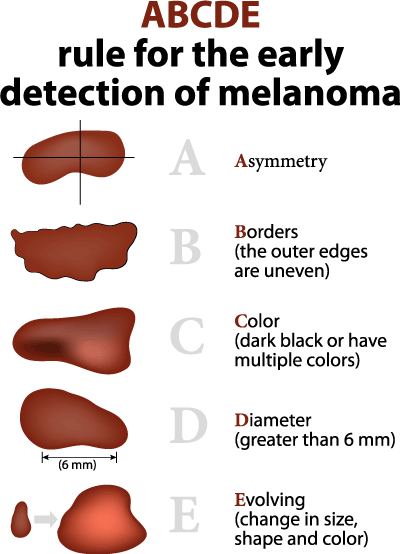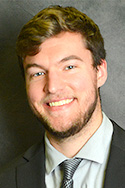Sun-Savvy in Waconia: Illuminating Skin Cancer Prevention and Detection
by Jack Dirnberger
May 2024
Warm, sunny days can be hard to come by in Minnesota and residents want to take advantage of them when they can. Skin experts warn that even in Minnesota, those days come with sun exposure that increases the chance of developing skin cancer. In fact, the Centers for Disease Control and Prevention named Minnesota second highest in the country for the number of people who develop melanoma, a specific type of skin cancer that can quickly spread to the liver, lungs, and brain and lead to death. More knowledge about this cancer might just save a life.
Medical professionals worldwide agree that the main culprit behind melanoma and some other skin cancers is exposure to UV radiation. Also referred to as ultraviolet light, it not only comes from sun rays, but also from artificial sun sources such as tanning bed lights. How much UV radiation is needed to cause skin cancer? Enough to cause sunburns is one example. Additionally, small amounts of exposure over many years can add up to enough to increase the chances of developing skin cancer.
Yet skin experts report that here are many simple steps to flip the odds so that Waconia and Carver County residents can decrease the odds of getting skin cancer. To start, think about doing the five S's when doing yard work, spending time on Lake Waconia, or just out enjoying fresh air and sunshine. Slip on sun-protective clothing to cover as much skin as possible. Slop on some sunscreen labeled SPF 30 – or even higher – at least every 2 hours. Slap on a broad-brimmed hat to protect the face, head, neck, and ears. Slide on some sunglasses to protect your eyes. Perhaps obvious is to also seek shade.
Despite doing all of the right things for skin protection, some people still develop skin cancer. That makes knowing how to recognize skin cancer in its early stages as important as knowing how to prevent skin cancer. Early diagnosis of skin cancers, including melanoma as one of the most serious types, is important because they are now more treatable, and people are living longer with the diagnoses.
 Enter the alphabet to provide a checklist for melanoma
self-check: ABCDE. “A” stands for
asymmetry, a spot that looks lopsided.
“B” is for border. Melanomas often
have an irregular edge versus a smooth border that is
less worrisome. “C” is for color.
Individuals should be suspicious that melanoma might be
the cause of a skin spot with more than one color. Next,
“D” is for diameter. If a spot is
bigger than a pencil eraser, it should be checked. Last,
“E” is for evolution, meaning any
changes in shape, color, or size might be an indicator
that the spot might be a melanoma. If a spot meets
anything on this list, the next step is to make an
appointment with a healthcare provider.
Enter the alphabet to provide a checklist for melanoma
self-check: ABCDE. “A” stands for
asymmetry, a spot that looks lopsided.
“B” is for border. Melanomas often
have an irregular edge versus a smooth border that is
less worrisome. “C” is for color.
Individuals should be suspicious that melanoma might be
the cause of a skin spot with more than one color. Next,
“D” is for diameter. If a spot is
bigger than a pencil eraser, it should be checked. Last,
“E” is for evolution, meaning any
changes in shape, color, or size might be an indicator
that the spot might be a melanoma. If a spot meets
anything on this list, the next step is to make an
appointment with a healthcare provider.
In addition to the alphabet guide ABCDE, one last guide can be leaned on: The ugly duckling sign. If someone has a lot of skin spots, just like the story about the ugly duckling who looked different than the rest of his brothers and sisters, if one skin spot doesn't look like all the others, people should make an appointment with their healthcare provider.
The American Academy of Dermatology recommends skin cancer self-checks. However, families with a history of melanoma or other skin cancers should check with their doctors about a different routine for skin checks.
Although melanoma can be a scary thing to think about, Minnesota residents can be rest assured there are simple, yet effective steps to prevent it or catch it early enough to stop it in its tracks: follow the five S's while in the sun and don't forget the ABCs of melanoma. While examining skin spots on yourself or others, if there is ever any doubt, have a doctor check it out.
About the Author
 Jack Dirnberger, a Waconia High
School graduate, is a third-year medical student at the
University of North Dakota School of Medicine & Health
Sciences. He's chosen to participate in the Targeted
Rural Health Education program, or TRHE. The program
focuses on teaching student doctors the importance of
rural newspapers as a way to share health information
with their rural community. The information is not for
diagnosis or treatment and should not be used in place of
previous medical advice provided by a licensed
practitioner.
Jack Dirnberger, a Waconia High
School graduate, is a third-year medical student at the
University of North Dakota School of Medicine & Health
Sciences. He's chosen to participate in the Targeted
Rural Health Education program, or TRHE. The program
focuses on teaching student doctors the importance of
rural newspapers as a way to share health information
with their rural community. The information is not for
diagnosis or treatment and should not be used in place of
previous medical advice provided by a licensed
practitioner.
